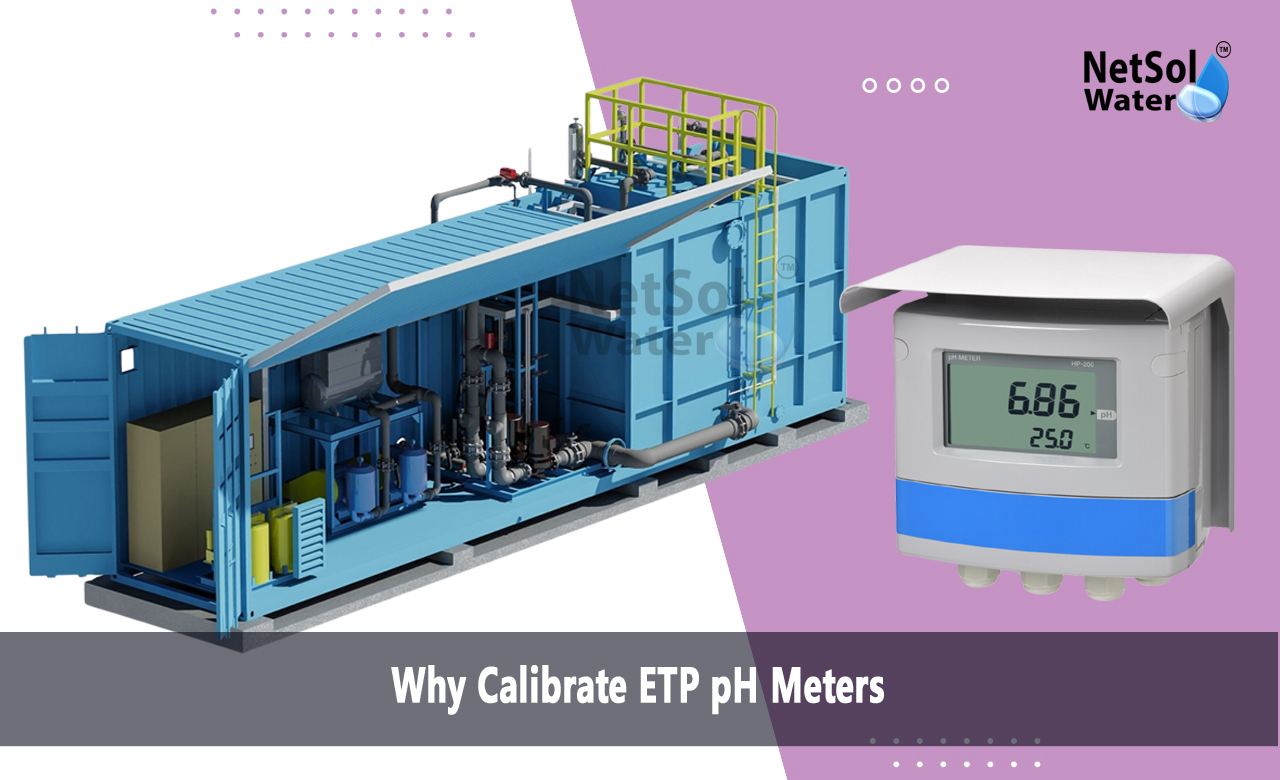Why Calibrate Effluent Treatment Plant pH Meters?
pH meters are used extensively in Effluent Treatment Plants in the way that they assist in determining that wastewater is treated suitably before discharge. Environmental regulation compliance and avoiding damage to treatment equipment necessitate proper pH measurement. pH meters do have a tendency to drift over time according to some parameters, which causes them to read inaccurately. Calibration is therefore necessary from time to time.
We will discusses the significance of pH meter calibration, calibration intervals, and factors determining the precision of pH meters.
The Significance of pH Meter Calibration
pH meters are precise instruments employed to ascertain the basicity or acidity of a solution. Sensor degradation, contamination, and environmental factors over time may render readings inaccurate. If the pH readings are not accurate, ETP processes will not function as expected, and treatment will be substandard.
pH meter calibration ensures that the readings are correct and enable operators to choose the right chemical dosing decision. Calibration also prevents equipment damage and standards conformity for pollution control.
How frequently should pH Meters be Calibrated?
Calibration frequency is a function of how frequently the pH meter is being used and the type of wastewater. These are some general rules:
· Daily Calibration: Suitable where high accuracy applications are needed for which small differences in pH are likely to have an impact on the effectiveness of treatment.
· Weekly Calibration: Suitable for ETPs of a moderate duration wherein there are low changes in pH.
· Monthly Calibration: Suitable where ETP conditions are stable with little chance for sensor drift.
If the pH meter is used close to strong chemicals, sludge formation, or high temperatures, calibration should be done more often to guarantee accuracy.
Factors Affecting pH Meter Accuracy
There are numerous factors that can result in a pH meter giving an inaccurate reading. Regular calibration counteracts these and guarantees accurate readings.
· Electrode Aging and Contamination: The pH electrode gradually degrades as it comes into contact with wastewater contaminants. Organic or inorganic substances precipitate onto the sensor might interfere with its function in measuring pH levels. Regular calibration neutralizes these.
· Temperature Fluctuations: pH readings are temperature sensitive. If a pH meter is not calibrated to the working temperature of the effluent, it will provide false results. Most pH meters nowadays have automatic temperature compensation (ATC), but they still need to be calibrated.
· Chemical Interference: There are certain chemicals in the wastewater, such as heavy metals or oils, that may hamper the working of the pH electrode. Calibration at regular intervals keeps it precise even in harsh conditions.
· Incorrect Storage of Electrodes: If the pH electrode dries out or is stored in distilled water instead of a proper storage solution for electrodes, it will become unresponsive. Calibration will put it back into accurate readings, but storage will extend sensor life.
pH Meter Calibration
Calibration assures the pH meter provides accurate readings. The following is carried out stepwise:
· Clean Electrode: Rinse the pH probe with distilled water to clean off trace deposits from previous readings.
· Prepare Buffer Solutions: Obtain standard buffer pH solutions of 4.0, 7.0, and 10.0 and prepare to be used as standards for calibration.
· Calibrate Using pH 7.0 Buffer: Submersion of the electrode in pH 7.0 neutral buffer solution and placing it on scale conforming to the corresponding value.
· Calibrate Using pH 4.0 and pH 10.0 Buffers: For two- or three-point calibration, use the acidic (pH 4.0) and alkaline (pH 10.0) buffer procedure.
· Rinse and Test: Rinse the probe after calibration and use it to test in a sample for accuracy verification.
Routine calibration keeps the pH meter producing consistent and accurate results, enhancing ETP efficiency.
Benefits of Regular pH Meter Calibration
· Correct Wastewater Treatment: Having the right pH balance enables chemical treatments to function in their best capacity, reducing wastewater contaminants before discharge.
· Protection against Equipment Damage: Incorrect pH levels could result in chemical overdosing or underdosing, pipe corrosion, pump damage, or loss of biological treatment unit effectiveness.
· Regulatory Compliance: Effluent treatment plants are required to meet strict discharge standards. Correct pH monitoring ensures environmental regulations compliance to prevent fines or legal action.
· Cost Savings: Accurate calibration avoids chemical overuse and minimizes maintenance expenses by increasing the pH electrode lifespan.
Conclusion
Daily pH meter calibration in Effluent Treatment Plants is important for the stability of wastewater treatment processes. Aging of electrodes, temperature variation, and chemical interference can cause pH meter drift, which requires calibration. Daily, weekly, or monthly pH meter calibration—based on usage—avoids false readings for operators, saves machinery, and complies with environmental standards.
Proper maintenance and calibration of the pH meter ultimately lead to cost savings, higher efficiency, and an effective ETP plant.
Do you need an advice or assistance on selecting the best water and waste water treatment unit? We have solutions for all your problems!
Let us know your problem, our experts will make sure that it goes away.
For an assistance or related query,
Call on +91-965-060-8473
Or write us at enquiry@netsolwater.com



